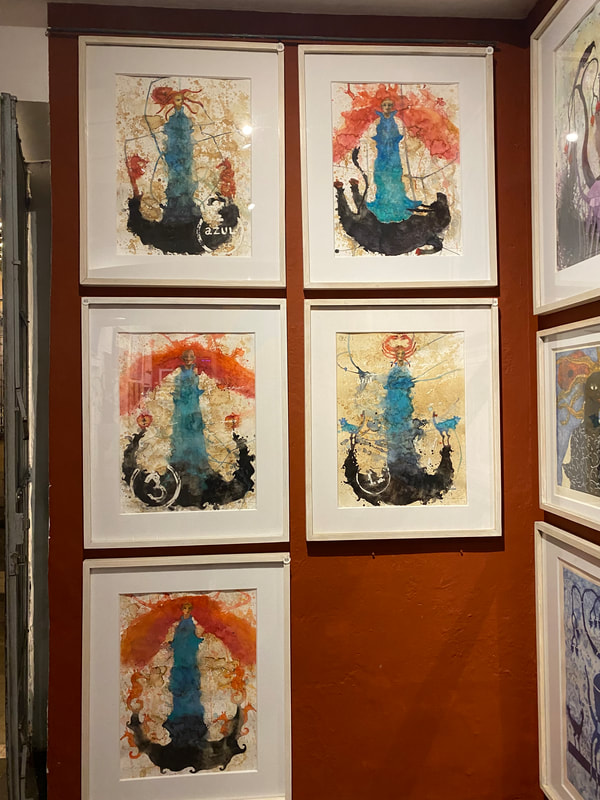|
On hearing from so many people while in Mexico City that the Oaxaca is so well known for it's culture, we could not wait to explore as many aspects of it's art, food and mezcal heritage! Oaxaca "centro" comprises of colourful quaint streets full of people buzzing around soaking up its culture, and embellished with beautiful churches. Up and around 'Plaza de la Danza' in Oaxaca, we came across a series of 30 watermelon shaped paintings on stands that had been created by 30 contemporary Mexican artists. A 30th anniversary homage to the legendary Rufino Tamajo, an artist of great reverence in Mexico! In my opinion, the most impressive selection of contemporary Oaxacan art was to be found at the Museo of Painters from Oaxaca just off the 'the Zocalo'. Apparently this museum was given many of the works by the local artists as a form of payment scheme to cover their tax obligations. Bartering is still something that happens in modern daily life in Oaxaca amongst communities. These mixed paintings above by local artists Miguel Carrillo Lara and Augustin Castro immediately struck me as being very rigorous and demonstrating a high level of technique. In the room opposite there was also a show by some well recognised "Maestros Oaxaquenos" including the master Tamayo, all exhibiting in honour of the 30th anniversary. The museum downstairs featured artist Jonathan Barbieri, who was born in Washington, America and later moved to Oaxaca where he chose to learn how to distill alcohol. He started out distilling Mezcal, before moving onto gin and whisky. Knowing this, one might say his work must have been created under the influence of what he liked to distill, reminding me a lot of work by Francis Bacon. His depiction of despair made his work very moving, leaving me intrigued to know more. Heading upstairs into the smaller exhibition rooms, I came across an exhibition named KUYU; which comprised of ink on paper and sculptural lettering under ultra violet light. The multi sensory effect it created was very unique and brought about a strong sense of silence but only really to be understood by being there in person. The room next door showed an installation by another American artist Franz Klainsek, a display which featured a room full of gold painted nails balanced, one next to the other and lit up to create an intriguing effect. After spending a few days roaming around the town, a local Oaxacan artist called Saul Castro fascinated me. Saul's work inspired by nature, is a response to the world around him and he is conveys this through a vibrant palette, choosing a balance of abstract and figurative art. I felt there was a lot I could learn from this particular artist with my own artistic development. On the last day of our trip in Oaxaca, we joined a guide to visit the 'Mezcal Artisan Communities', half an hour outside the centre, in the region of San Baltazar de Chichicapam and Santa Catarina Minas. It was fascinating to learn how the farmers in these communities have worked so hard together to build this mezcal artisan tradition. In one "palanque" (mezcal distillery) we visited, our guide introduced us to the Mezcal Mural Festival through the work of Fernando Cordovas Albores seen in the mural above. The combination of mezcal distilleries or "palanques" featuring mural paintings by contemporary local artists is the ultimate cultural experience. Definitely a reason to return to Oaxaca again!
0 Comments
|
|


































 RSS Feed
RSS Feed